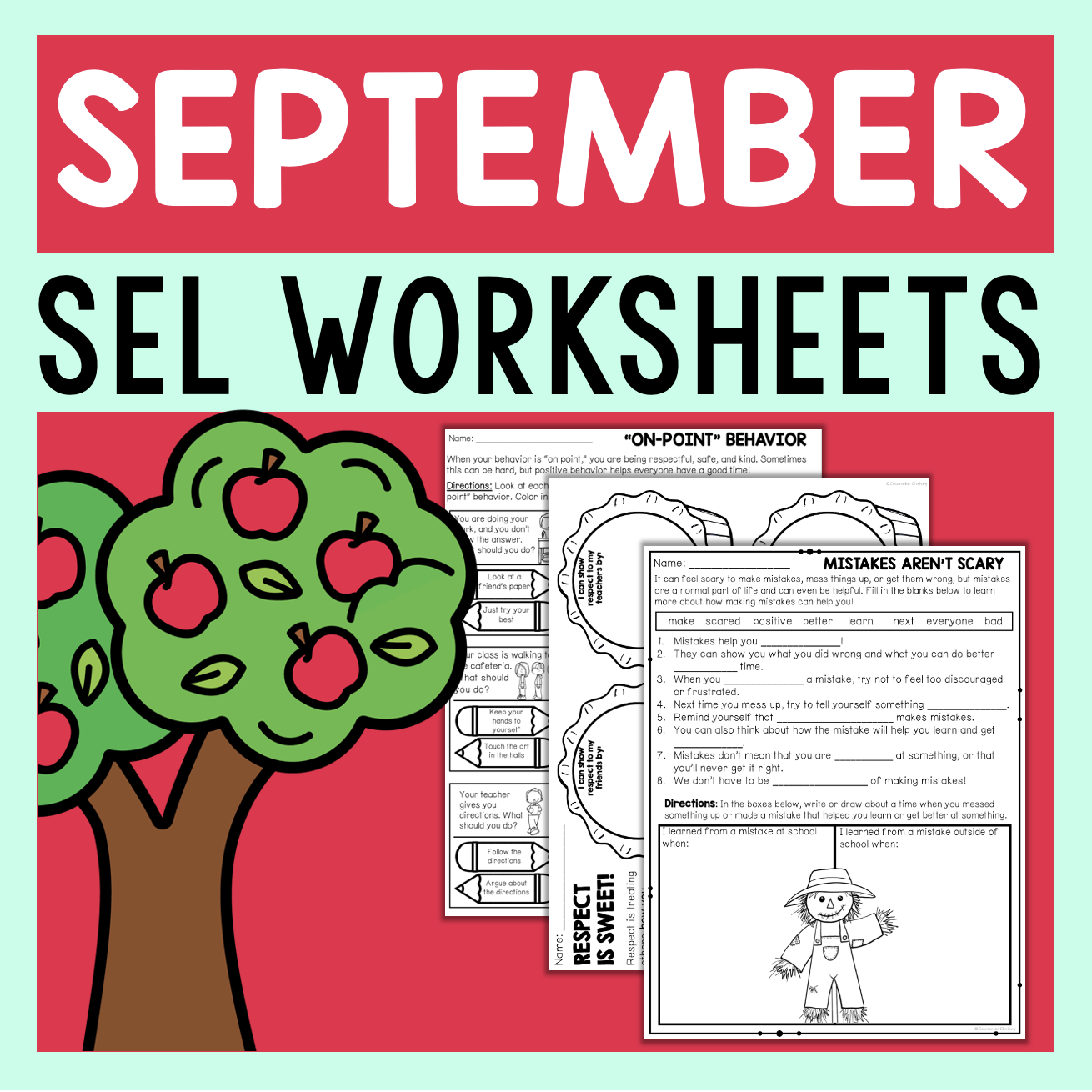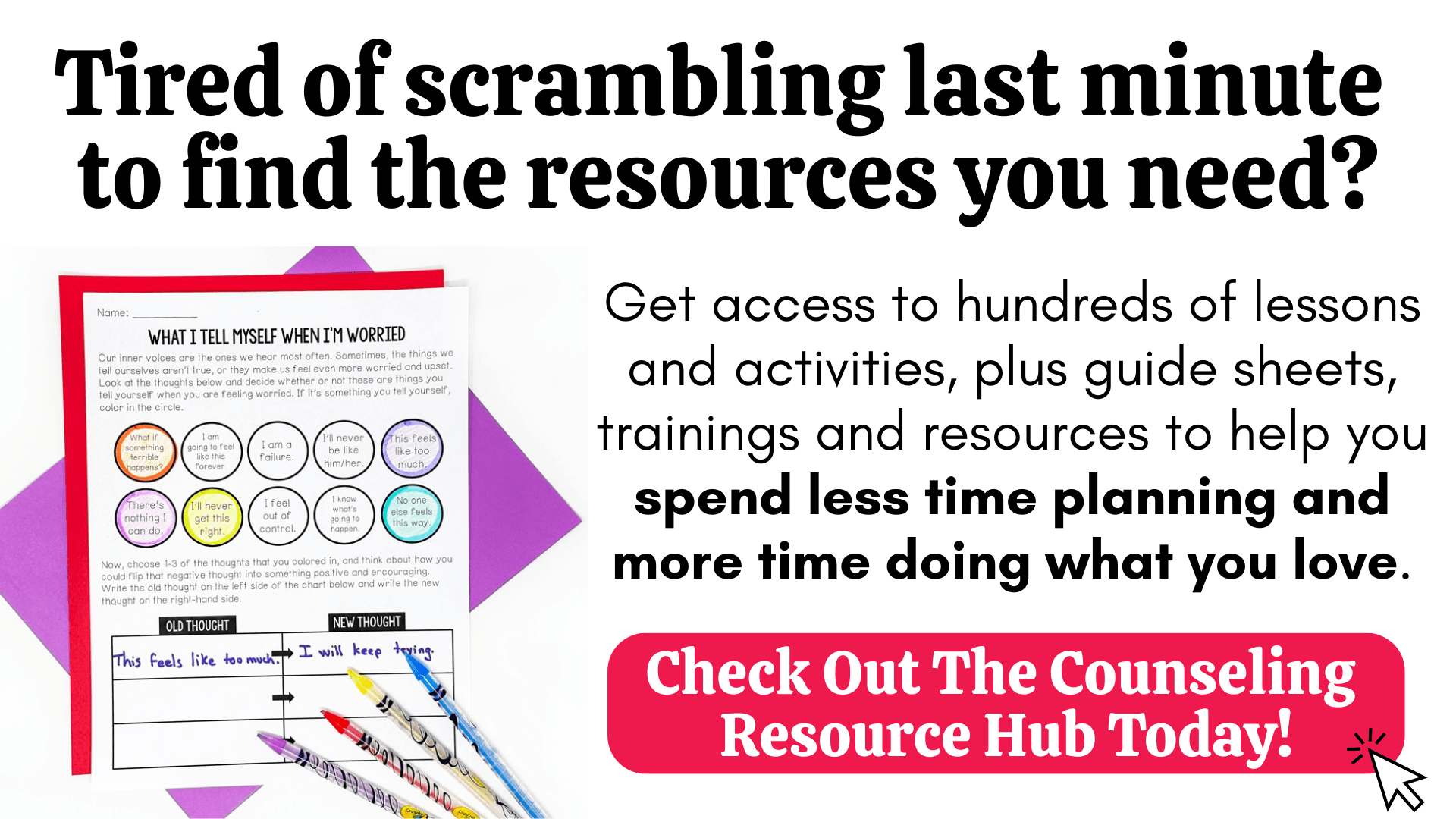3 Fun Ideas For Your Meet The Counselor Lessons
Feelings helper, behavior teacher, mom. Those are just some of the things students have called me.
Understanding the role of the counselor can be a little tricky for kids. It doesn’t seem to be as cut and dry as gym teacher, principal, etc. Yet, helping kids understand what we do (and don’t do!) is an important part of making sure students feel supported.
Even if you’ve been at your school for a long time, a refresher on the role of a school counselor can help you and your students set the year off on the right foot. Taking time at the beginning of the year to introduce yourself and your role will help students to feel comfortable coming to you for help, and can clear up any misconceptions about what you do.
These three activities will help your meet the counselor lessons be engaging and meaningful!
Use Books To Explain The Counselor’s Role
I LOVE using books in my counseling lessons. There are so many great books out there that do the teaching for you. Plus, kids love books and they can lead to such meaningful conversation.
Two of my favorite books for introducing the role of the counselor are:
The Rabbit Listened by Cori Doerrfeld
In this book, Taylor builds an amazing tower, but it gets knocked down. Taylor’s friends each come by and try to make things better. They suggest different things - like laughing about it, trying to remember what it looked liked, etc. but none of their suggestions helped Taylor. That is, until Rabbit came along. Rabbit listened, which was just what Taylor needed.
You can use this book to explain that you’re there to listen to your students - about what’s hard, what’s going well, their friendships, their families, etc.
Mrs. Joyce Gives The Best High Fives by Erainna Winnett
This story follows a boy named Raymond as he learns about the role of a school counselor. First, his friends share how Mrs. Joyce, the school counselor, has helped them. Then, Raymond gets to visit Mrs. Joyce in her office where he gets all of his questions answered about what she can help with, confidentiality and more.
This book has a clear explanation of what a counselor does, but you can also follow up with students about any ways that your role may be different than Mrs. Joyce’s.
Use these books in your beginning of the year counseling lessons or when doing a small group for new students to help them get to know you and learn about what you do.
Make It A Game
Kids love games. You can get them excited about learning almost anything if you make a game out of it. Your meet the counselor lessons are no different.
Check out the Meet The Counselor Google Slides Game
If you’re looking for an interactive way to help students understand your role, and to clear up any misconceptions about what you do, try playing a guessing game with your students. Come up with different explanations of what you do (or don’t do) and have them guess whether it’s true or false. For added fun, split your students into teams and have them compete to see who can get the most questions right.
Some sample questions include:
True Or False: My counselor only works with kids one on one.
True or false: My counselor can help me reach my goals!
True or false: My counselor wants me to get in trouble.
To make it easier, I have already created a game for you that includes 30 true/false questions. Kids will learn about what you do and how you can help them. The a scoot game version will help you get kids up and moving, and the Google Slides version is an easy way to incorporate technology into your lesson. Both include the same 30 questions that will lead to students being more comfortable with you and your role.
“Who Is The Counselor?” Bag
If you have a little more time to plan, a mystery bag activity is another engaging idea for your meet the counselor lessons. To do this, you’ll put different items in the bag to describe you and your role. Then, either you, or your students, can pull items out of the bag one at a time. The students can guess what each item represents before you explain why you included the item.
To help students get to know you personally, include items that reflect your interests and personal life, like:
Pictures of your family
Something to represent a hobby of yours - like a paintbrush, or a book, or a game piece from your favorite game.
Something to represent your favorite food - like a piece of candy, or even a napkin from your favorite restaurant.
A stuffed animal or figurine of your favorite animal.
To help students understand your role as the school counselor, you can include things that represent what you do, like:
A stress ball to show that you can help them find ways to calm down when they’re feeling upset
An apple to show that you can work with their teachers and other school staff to help them socially, emotionally and academically
You can use this to also talk about confidentiality
A smiley face picture or post it note to show that you can talk about what’s going well, not just their problems.
An example of the referral sheet you use so they know how to come to you
Regardless of how you choose to introduce your role, taking time to clear up any misconceptions and make sure students know how you can help them is a great way to start off the year. These ideas will help you create meaningful lessons to let students know that you’re there to provide a listening ear and to support them with what they need.










